Affiliate links on Android Authority may earn us a commission. Learn more.
8 ways the Galaxy S8 is objectively better than the iPhone 7
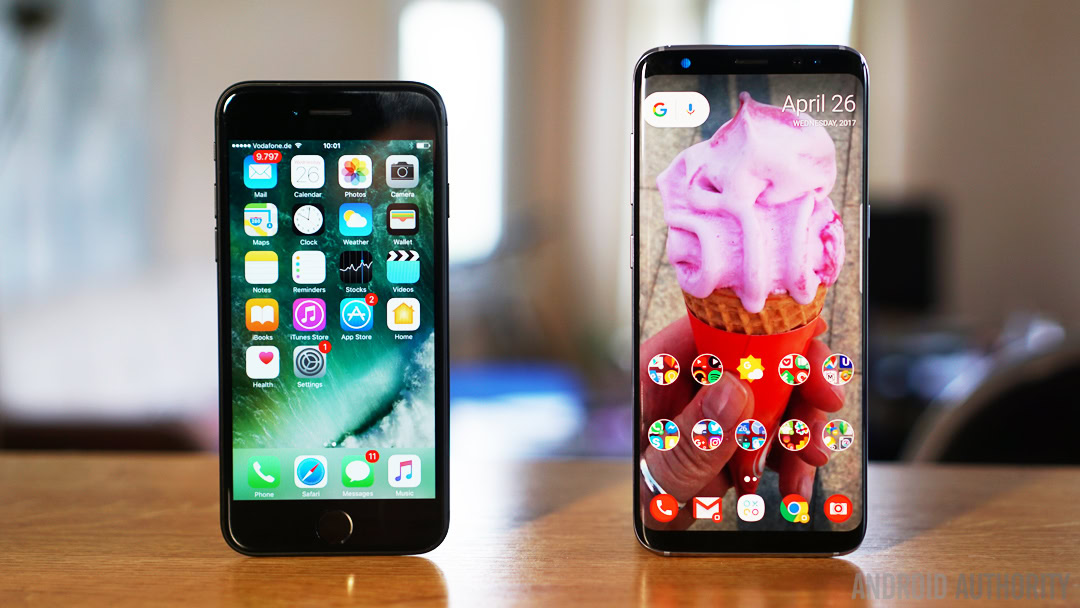
This was never going to be a fair fight on a site called Android Authority, but I believe that, all fanboyism aside, we can objectively prove the Galaxy S8 is better than the iPhone 7. So grab some popcorn and settle in, because this is about to get ugly.
Don’t miss or Galaxy S8 Plus vs Apple iPhone 7 Plus video comparison
Display
Cast aside the illusory appeal of the term ‘Retina’ for a moment and look at the facts: the Galaxy S8 has a much larger screen than the iPhone 7 despite sharing a similar footprint, has higher resolution and greater pixel density, a larger screen-to-body ratio, (arguably) better display technology, and much, much smaller bezels. Yes, there’s a slight height difference, but it’s a small price to pay for a bigger, better display, and they feel the same in the hand due to the S8’s taller aspect ratio.
Headphone jack
Apple bid farewell to the 3.5 mm headphone port on the iPhone 7 last year, ostensibly to allow the company to make a thinner phone with more valuable internal space for other technology (cough! accessories!). Whatever the reason, the Galaxy S8 has a headphone jack, still has a better IP water-resistant rating than the iPhone 7 and can also pair with wireless headphones, including AirPods.
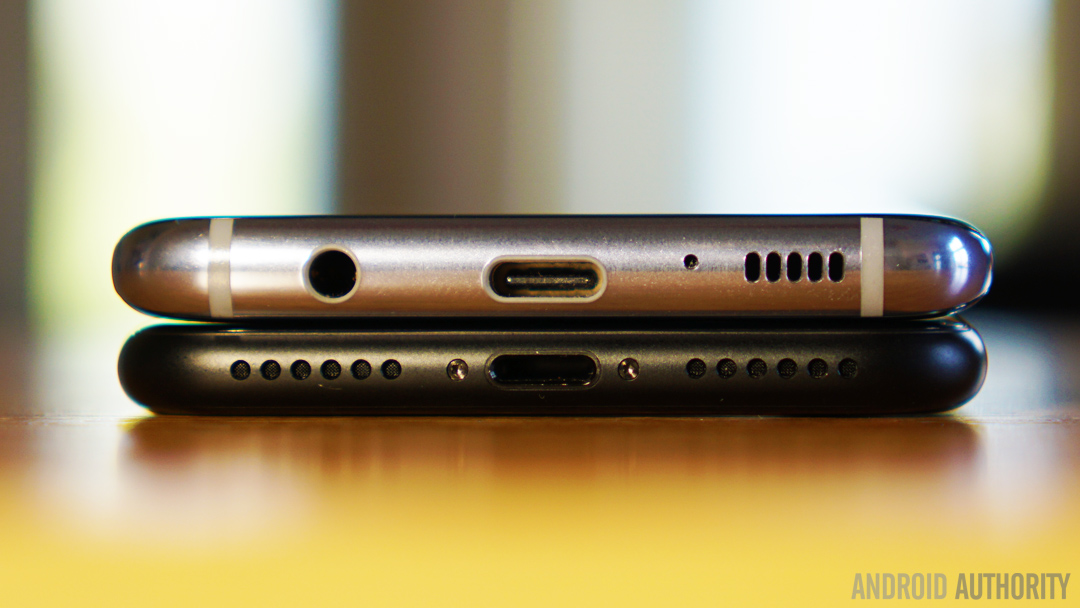
Unlocking options
The Galaxy S8 has so many unlock options you’ll need to read our post on the best way to unlock your Galaxy S8. The iPhone 7 on the other hand has the (admittedly good) TouchID, but that’s it, besides a backup PIN. On the other hand, the Galaxy S8 has the familiar PIN/password/pattern options as well as a facial recognition feature, a fingerprint scanner, and an iris scanner. More isn’t always better, but when TouchID and the S8 finger sensor are equally good, all the other S8 options, especially the iris scanner, are just icing on the safety cake.
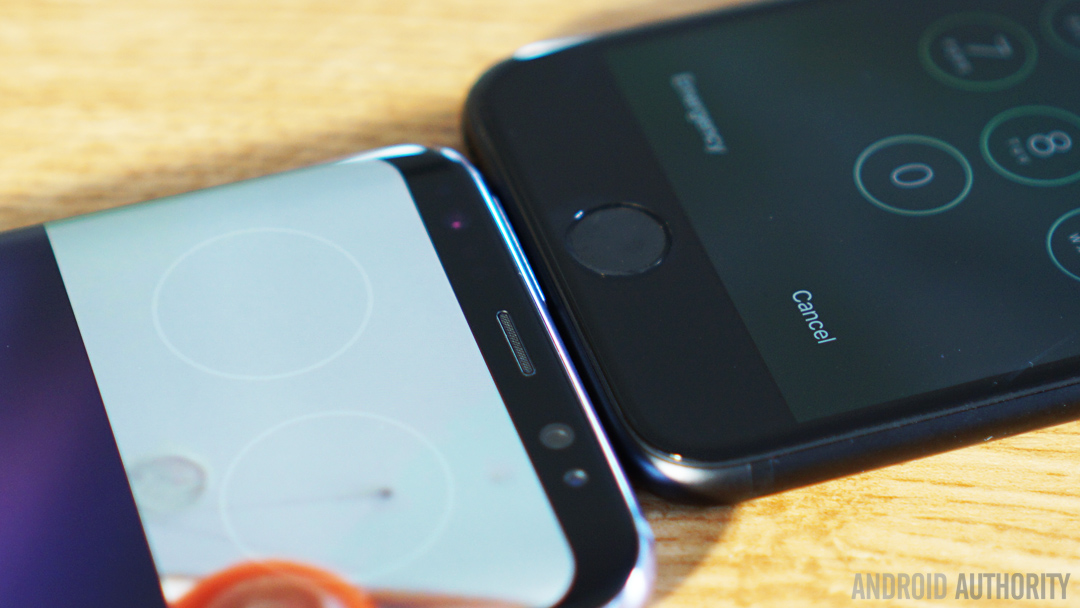
MicroSD
The Galaxy S8 has double the base storage of the iPhone 7. Yes, the iPhone 7 comes with options for both 128 GB and 256 GB of storage, but Galaxy S8 owners have the option of simply adding a microSD card to their phone at any time, without having to fork over an additional $100 or $200 up front. You can get 256 GB microSD cards for less than $150, which goes on top of the 64 GB of base storage on the S8, and you can take that extra storage with you when you upgrade.
Design
Good design is ultimately in the eye of the beholder, but not only does the Galaxy S8 look much more futuristic than the iPhone 7 from the front, it also doesn’t have one of the most unsightly developments in recent smartphone design on the back: a camera bump. The Galaxy S8 is less than a millimeter thicker than the iPhone 7, but it manages to be rid of the camera bump that makes the iPhone 7 wobble when it’s laid on a table while packing an equally good, if not better, camera.
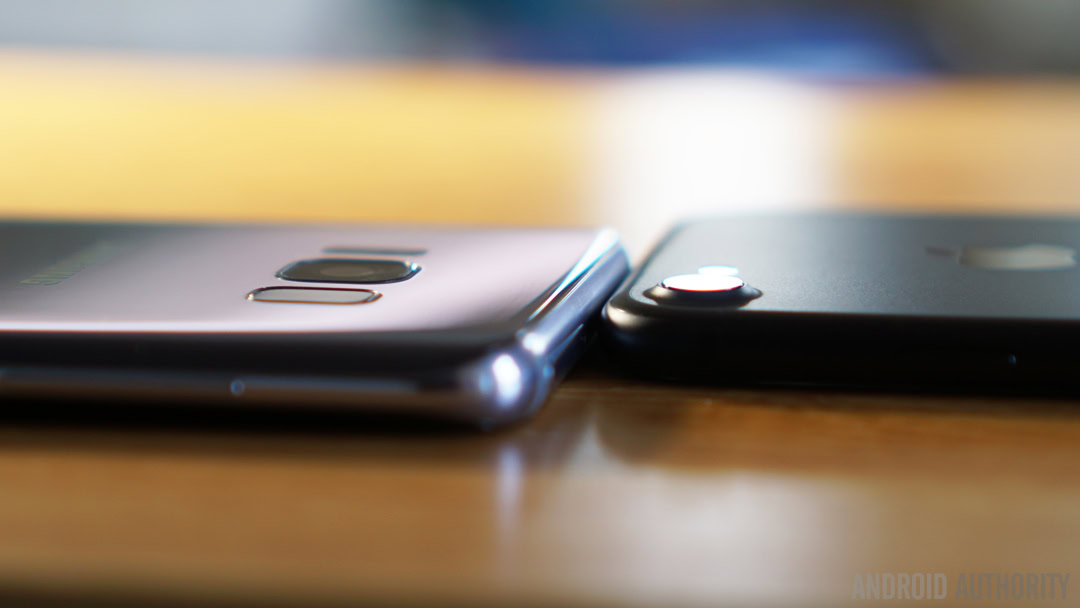
Wireless charging and battery
The metal chassis of the iPhone 7 means wireless charging is not an option. Not that wireless charging has ever been an option on an iPhone, but no matter. The Galaxy S8 not only supports cabled fast charging and wireless charging, but also wireless fast charging, three things the iPhone 7 does not offer. Oh, and the S8 has a battery that’s a third larger than the iPhone 7 with better battery life to match.
Customization
I don’t mean this in the typical “Android is more customizable than iOS” sense either. I mean this in the sense of Samsung adding even more customization options than usual. For starters: you can now reorient the navigation buttons to their stock Android order. You can set up the Always on Display however you like, choose your own lock screen shortcuts and place additional widgets behind the clock. You’ve got the choice between both Bixby and Google Assistant and the list goes on and on. In comparison, the iPhone 7 lets you choose a different keyboard.
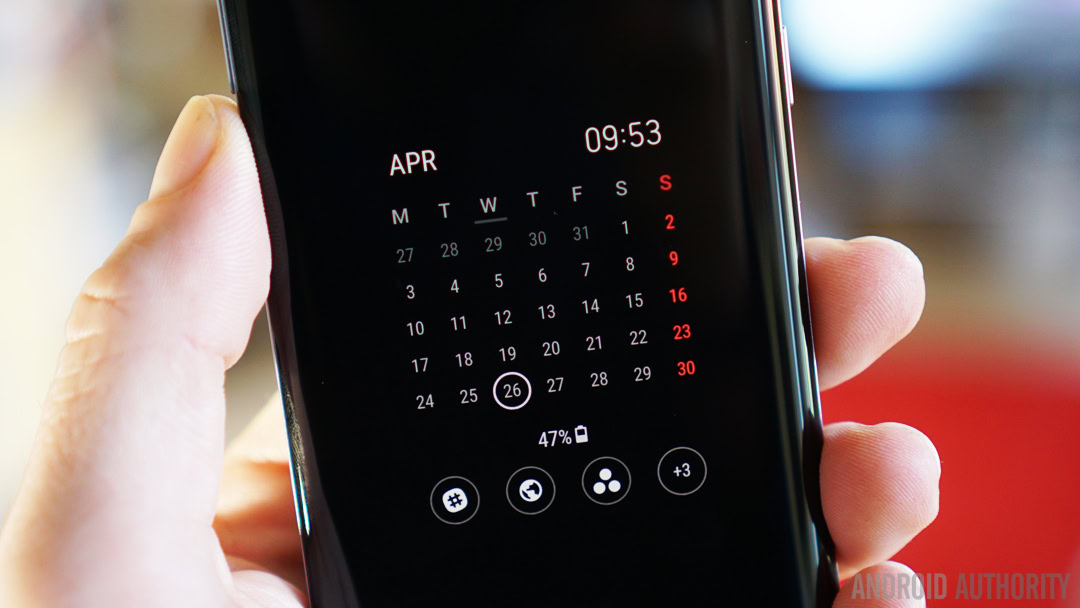
VR
There’s now a third generation Gear VR complete with a controller to compete with Apple’s complete lack of any VR product. VR may not be high on everyone’s list of purchasing decisions, but if VR appears anywhere on that list, the Galaxy S8 wins. I don’t know if I’d call DeX a huge advantage just yet, but if turning your smartphone into a PC is a thing you’d like to do, the Galaxy S8 is the only phone to offer that too.